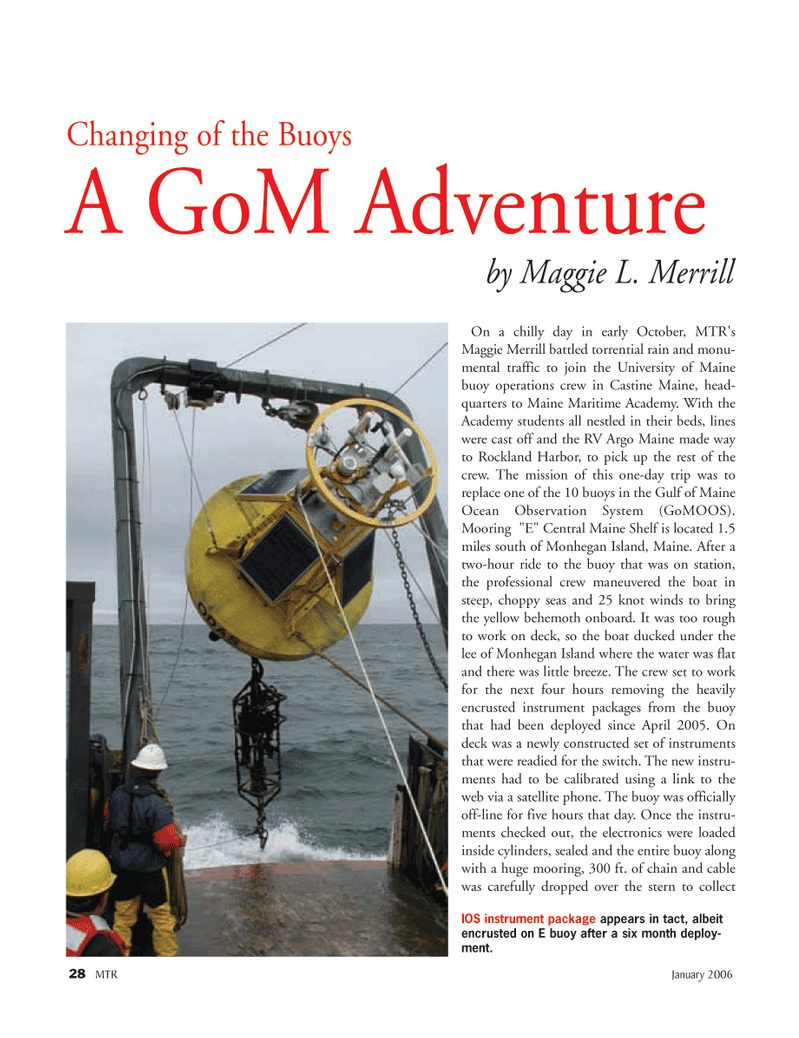
Page 28: of Marine Technology Magazine (January 2006)
Marine Science Institutions
Read this page in Pdf, Flash or Html5 edition of January 2006 Marine Technology Magazine
28 MTR January 2006
On a chilly day in early October, MTR's
Maggie Merrill battled torrential rain and monu- mental traffic to join the University of Maine buoy operations crew in Castine Maine, head- quarters to Maine Maritime Academy. With the
Academy students all nestled in their beds, lines were cast off and the RV Argo Maine made way to Rockland Harbor, to pick up the rest of the crew. The mission of this one-day trip was to replace one of the 10 buoys in the Gulf of Maine
Ocean Observation System (GoMOOS).
Mooring "E" Central Maine Shelf is located 1.5 miles south of Monhegan Island, Maine. After a two-hour ride to the buoy that was on station, the professional crew maneuvered the boat in steep, choppy seas and 25 knot winds to bring the yellow behemoth onboard. It was too rough to work on deck, so the boat ducked under the lee of Monhegan Island where the water was flat and there was little breeze. The crew set to work for the next four hours removing the heavily encrusted instrument packages from the buoy that had been deployed since April 2005. On deck was a newly constructed set of instruments that were readied for the switch. The new instru- ments had to be calibrated using a link to the web via a satellite phone. The buoy was officially off-line for five hours that day. Once the instru- ments checked out, the electronics were loaded inside cylinders, sealed and the entire buoy along with a huge mooring, 300 ft. of chain and cable was carefully dropped over the stern to collect
Changing of the Buoys
A GoM Adventure by Maggie L. Merrill
IOS instrument package appears in tact, albeit encrusted on E buoy after a six month deploy- ment.
MTR#1 (17-32).qxd 1/9/2006 2:30 PM Page 28

 27
27

 29
29
